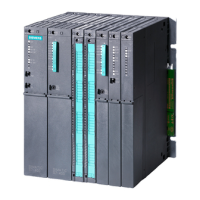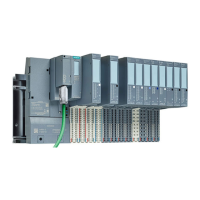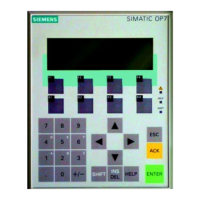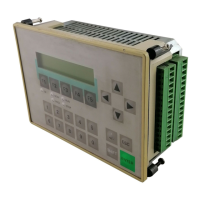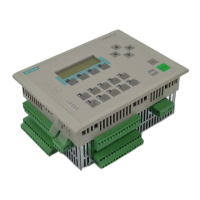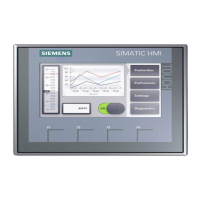Supplementary information
18.16 CPU 410 cycle and reaction times
CPU 410 Process Automation/CPU 410 SMART
System Manual, 05/2017, A5E31622160-AC
359
Calculating the cycle time
Extending the cycle time
The cycle time of a user program is extended by the factors outlined below:
● Time-based interrupt processing
● Hardware interrupt processing (see also Chapter Interrupt response time (Page 373))
● Diagnostics and error processing (see also Chapter Example of calculation of the
interrupt response time (Page 375))
● Communication via the integrated PROFINET IO interface and CPs connected by means
of the communication bus
(e.g.: Ethernet, Profibus, DP) as a factor in communication load
● Special functions such as monitoring and modifying variables
or the block status
● Transfer and deletion of blocks, compressing of the user program memory
● Runtime of signals using the synchronization cable
The table below shows the factors influencing the cycle time.
Table 18- 10 Factors influencing cycle time
Transfer time for the process
output image (POI) and process
See tables from 19-3 onwards
User program execution time This value is calculated based on the execution times of the vari-
ous statements (see the
S7-400 statement list
).
Operating system execution time
at the cycle control point
See Table 19-7
Extension of cycle time due to
communication load
You configure the maximum permitted communication load on
the cycle as a percentage in
(Manual
Programming with
STEP 7
). See Chapter Cycle load due to communication
Load on cycle times due to inter-
Interrupt requests can always stop user program execution. See
The table below shows the time a CPU requires to update the process image (process
image transfer time). The specified times only represent "ideal values", and may be
extended accordingly by any interrupts or communication of the CPU.
Calculation of the transfer time for process image update:

